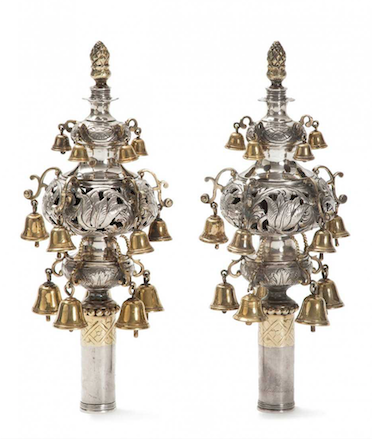NEW YORK — Judaica, or the material culture of the Jewish people, is revered both in the Israeli homeland and throughout the diaspora. In particular, ritual objects hold great importance, but many other forms of Jewish memorabilia, in particular those pieces made of silver, are also treasured for their beauty.
Antique Judaica is rare today, primarily because of the decimation of the European Jewish population during the Holocaust. Jewish ritual objects seized by the Nazis were routinely destroyed or, if made of silver, melted for scrap. The small supply of items available today usually translates into robust prices, such as those realized by Michael and Judy Steinhardt’s collection of Judaica that made $8.5 million at Sotheby’s in 2013. One standout in the collection didn’t even make it across the auction block but was sold ahead of the auction in a private sale for an undisclosed price. The circa-1457 illuminated manuscript known as the Mishneh Torah was described as the “magnum opus” of medieval philosopher Moses Maimonides, who created it in northern Italy. It was jointly purchased by the Israel Museum in Jerusalem and New York’s Metropolitan Museum of Art.
Jonathan Greenstein, founder of J Greenstein & Co. Inc. in Cedarhurst, N.Y., and a Judaica expert, said collectors look for items that possess certain attributes — “age, beauty and condition.” The country where an object was made is always important, he said. “Do they [the buyers] have a spiritual connection to the piece? It has to sing to them.” He noted that Italian and Prague silver items are among the most desirable, that people tend to collect pieces from their country of origin. The market is strong for authentic pieces, he said.
With Rosh Hashanah (Jewish New Year) beginning this year on Sunday, September 9, it’s an opportune time to survey the six most collected and desirable types of Judaica.

- Menorahs
In the Jewish faith, the menorah, a candelabra with eight branches, is integral to the eight-day Chanukah celebration. The menorah represents the victory of the Maccabees over the Syrians and the miracle of a one-night supply of lamp oil lasting eight nights, Greenstein said. Antique and contemporary menorahs routinely bring strong prices. A monumental silver menorah by Shuki Freiman, circa 1990, Israel, sold at J. Greenstein & Co., in December 2016 for $19,000. The 41-inch piece was shaped to resemble a temple menorah and was hand hammered.
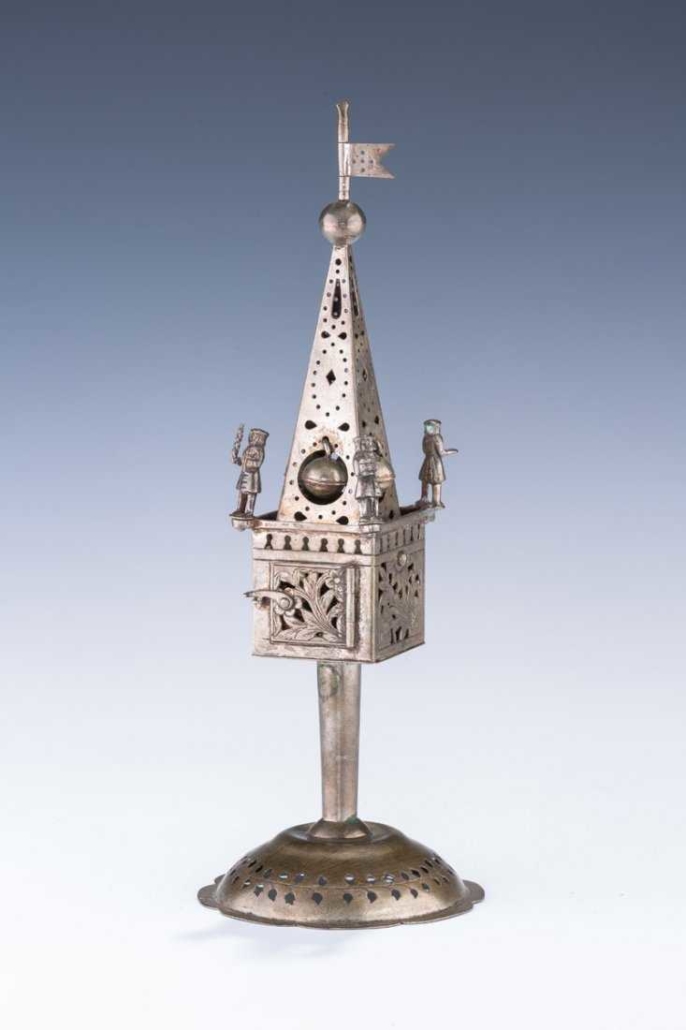
- Spice boxes/towers
Spice boxes (besamim) and spice towers are among the most elaborately decorated of silver Judaica pieces. Besamim boxes and spice towers are traditionally used to signify the end of the Sabbath and, at the end of Yom Kippur, one of the most sacred of all Jewish holy days. They were made to contain sweet spices, inspiring prayers that sweetness would continue long after the holiday. Greenstein & Co., Inc., sold a circa-1790 German spice tower for $67,500 in February 2015. The 9½-inch tower had floral latticework and a pierced upper steeple. On it are four original figures. Three of them hold objects: a Havdalah candle, a cup, and a prayer book, respectively. The fourth figure has outstretched arms.
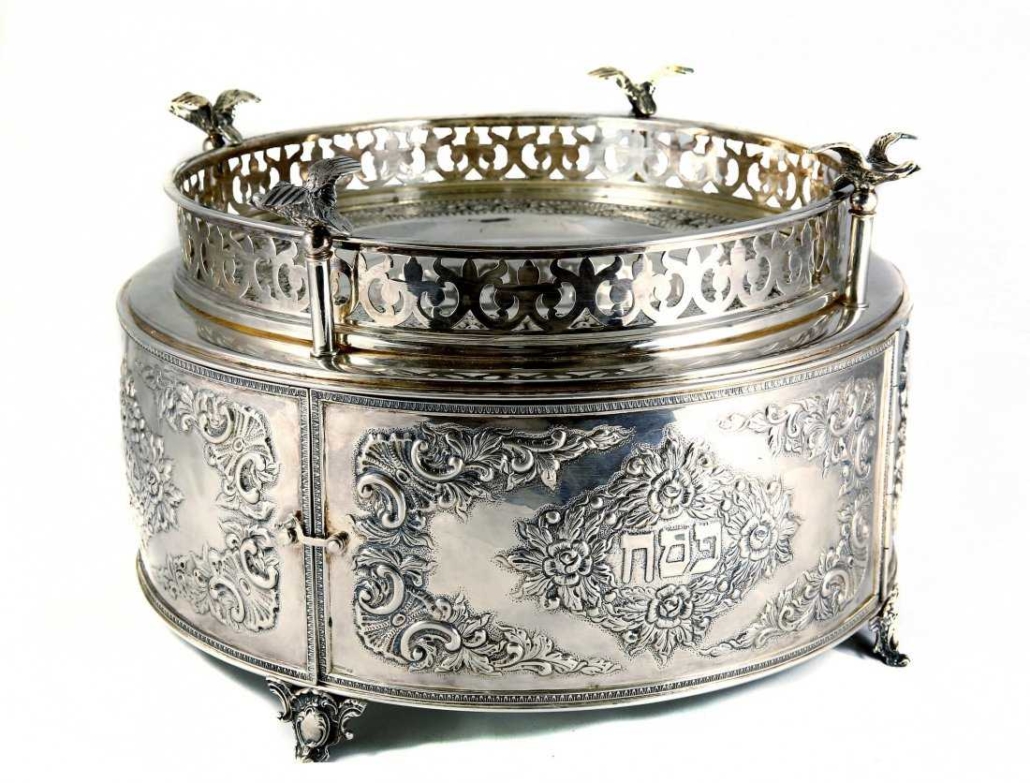
- Seder plates
The Passover seder plate is used during the holiday marking the Jews’ exodus from Egypt after their enslavement, according to the Old Testament. These plates usually have six spaces on which six symbolic food items are served. Such plates are highly decorative, with Passover motifs and Hebrew inscriptions. Some are multi-tiered. A lavishly decorated 15-inch diameter seder plate of stamped sterling silver, American, 20th century, earned $4,200 at Winner’s Auctions & Exhibitions Ltd., in November 2016. The round plate standing on four legs bears a motif of leaves and flowers and is inscribed with “Pesach Matzah U’Maror.”

- Torah finials
Torah finials (or Torah Rimonim) are used to decorate the cases containing Torah scrolls. Several pairs of silver finials have made over $100,000, respectively, at auctions in recent years. A pair of finials by the Jewish silversmith Abraham Lopes de Oliveyra, London, 1740, cast, pierced, engraved and partly gilt, brought $160,000 at Kedem Auctions in November 2016; while a pair by goldsmith Christian Ludwig Pintsch, Berlin, circa 1755, having rocaille and lattice decoration, sold for $110,000 at Kedem Auctions in October 2017. A large parcel gilt pair by J. Rimonim (Johann Jacob Runnecke), Fuerth, circa 1770, topped with a crown and a large bell, achieved $105,000 at J. Greenstein & Co., Inc., in June 2014.
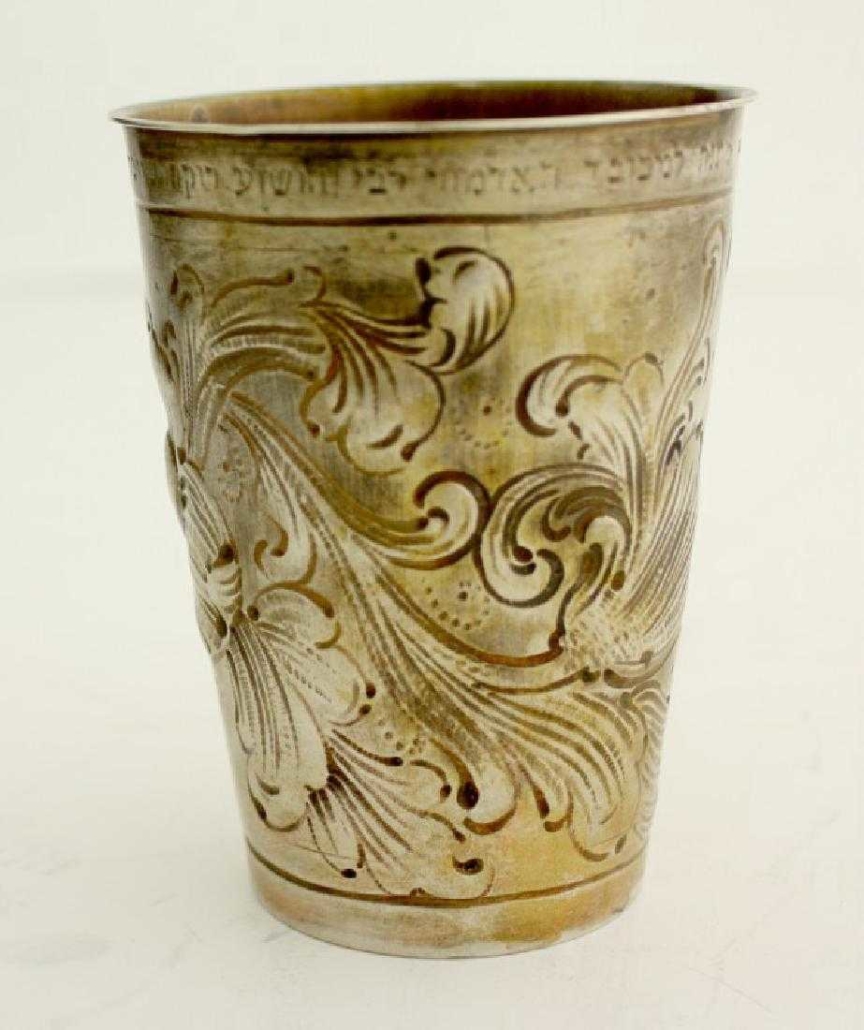
- Kiddush cups
Kiddush cups are a good access point for new collectors just starting out in the Judaica market, Greenstein said. While a general specialist in Judaica, Greenstein wrote a book on this subject: A Lost Art Handmade Silver Kiddush Cups of Eastern Europe (2005, softcover). The word “kiddush” means sanctification. It references a blessing spoken over wine or grape juice to consecrate the Shabbat and Jewish holidays. A kiddush cup of the Rebbe Rabbi Yehoshua, a well-known Torah scholar, sold for $30,000 at Jerusalem of Gold Ltd., in August 2017. The cylindrical silver cup was crafted in the late 19th century by the German Jewish maker Simon Rosenau.
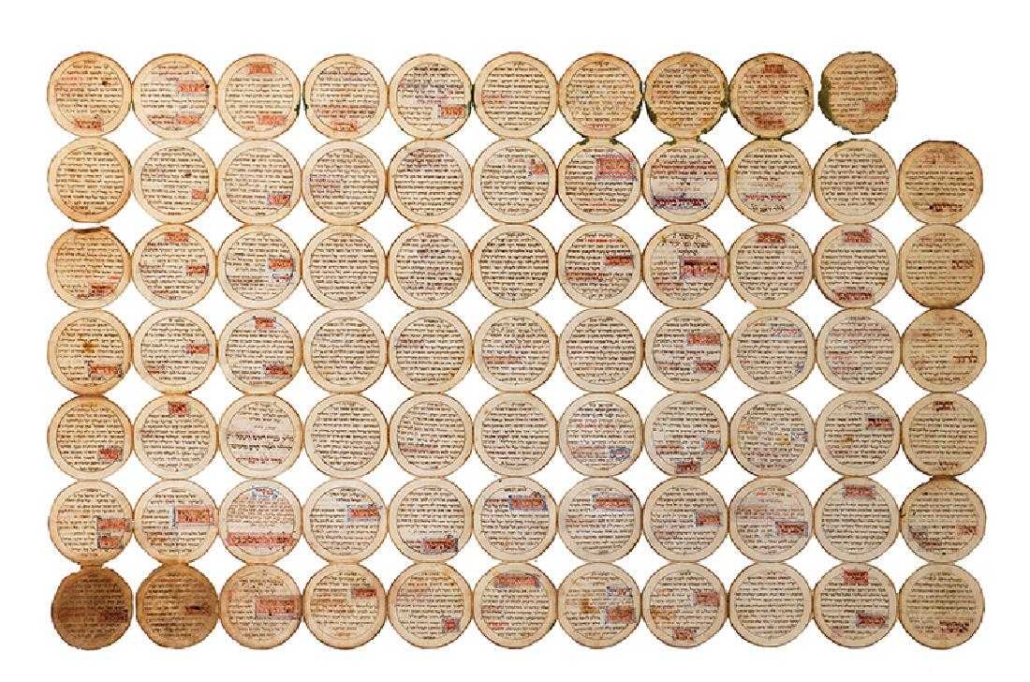
- Miniatures
Miniature Torahs (for travel) and manuscripts are popular with collectors because they don’t take up much shelf space and, even in small scale, it’s easy to appreciate the level of skill and intricate craftsmanship that went into them. A miniature Sefer Torah on parchment, including two scroll handles (atzei chaim), silver finials (rimonim) and pointer (yad), Germany, 1794, realized $65,000 at Winner’s Auctions & Exhibitions Ltd., in April 2016. A miniature manuscript on parchment, a year-round machzor for the High Holy Days, Pesach, Shavuot, Sukkot and Rosh Chodesh, made in Italy in the 15th century, fetched $170,000 at Kedem Auctions in April 2018.
Judaica is still made today. While contemporary pieces are certainly desirable, 17th- and 18th-century pieces remain the most valuable, Greenstein said. Collectible contemporary makers include Ludwig Wolpert and David Gumbel. Asked which collecting category is on the rise, Greenstein cited kiddush cups, spice boxes and menorahs. “In personal-use items, things used to decorate a synagogue are nowhere near as desirable, unless they are magnificent, compared to things used at home.”
Click to view Judaica currently available on LiveAuctioneers.
# # #


